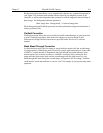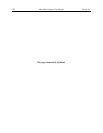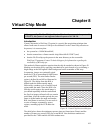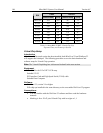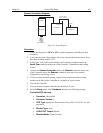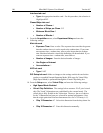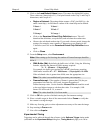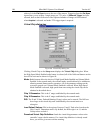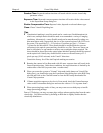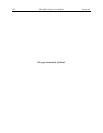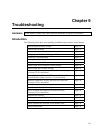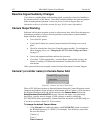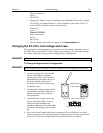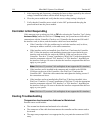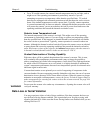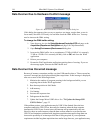
Chapter 8 Virtual Chip Mode 109
Readout Time: Reported readout time that will result with the current virtual-chip
parameter values.
Exposure Time: Reported current exposure tim
e that will result with the value entered
in the Experiment Setup dialog box.
Shutter Compensation Time: Reported value; depends on selected shutter type.
Close: Closes Virtual Chip dialog box.
Tips
¤ If mechanical masking is used, the mask can be a static one (fixed dimensions) in
which case, multiple masks should be made to accommodate a variety of imaging
conditions. Alternatively, a more flexible mask can be manufactured by taking two
thin metal sheets with a square hole the size of the exposed region of the CCD cut in
the center. This would be 512 × 512 pixels at 15 microns per pixel = 7.68 mm ×
7.68 mm for the MicroMAX. These masks should be anodized black to prevent
reflections in the optical system and they should be very flat. These two sheets can
then be slid relative to one another to achieve any rectangular shape required. The
sheets should be placed flat in the optical plane and their openings should be centered
on the optical axis. Ideally they should be able to move with an accuracy of 2-3
pixels per step (30-45 microns) in the X and Y directions.
Consult the factory for off-the-shelf optical masking accessories
¤ Running the camera in Free Run mode with 0.0 msec exposure time will result in the
fastest acquisition time. Under these conditions, the acquisition time is limited by the
readout time of the ROI (exposure time ≡ readout time).
¤ When you return the system to "Normal" chip mode (radio button on Virtual Chip
dialog box), you should also open the Experiment Setup dialog box at the ROI Setup
tab card and click on the ClearAll button to clear the ROI setup downloaded for
Virtual Chip operation.
¤ If frame acquisition appears to be slow in Focus mode, check the Frames/Interrupt
value on the Environment dialog box and reset the value to 1 if it is greater than 1.
¤ When processing large stacks of data, you may want to use a third-party scientific
image processing package.
Due to CCD design, you may see some edge artifacts when acquiring data from
the entire
virtual chip. Crop these artifacts by defining an ROI that is slightly smaller than the
virtual chip dimensions.



